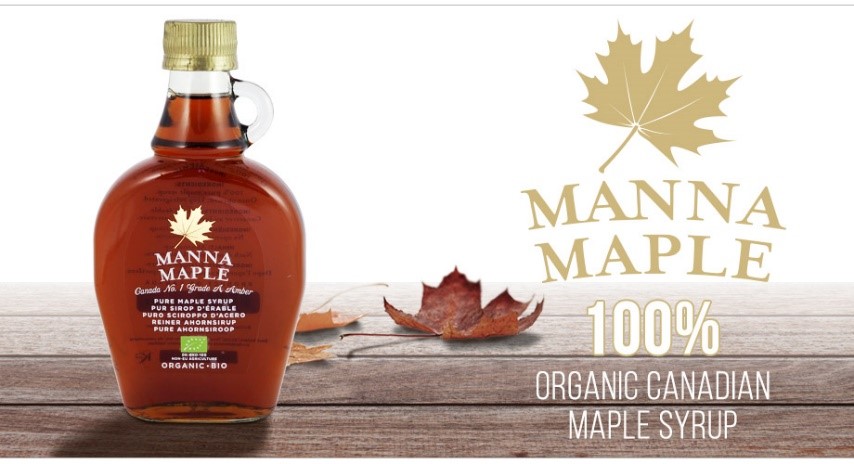The Natural & Organics Show (NOPEX) will be taking centre stage once more at…

Representing the Personality of Your Brand Through Packaging
There are many definitions of branding and even the briefest of searches on the internet will present you with a number of variations. The one constant theme, however, is an acknowledgement of the importance of branding and the influence it has on how people engage with your organisation.
In this article, we look at how packaging relates to your brand and how it can determine which customers will buy your products or services, or indeed if they will at all.
Aside from the most obvious marketing routes such as media advertising and social media management, the packaging on your products is one of the most direct means of engaging with potential customers and catching their attention.
It is therefore a crucial variable to get right and can be the difference between somebody making a buying decision with you or with a competitor.

A Brief History of the Brand
From an Old Norse term brandr, which means ‘to burn’, the original concept was to attribute ownership of property – usually livestock – by literally burning animals to leave an identifiable mark so that others would know to whom they belonged.
Evidence suggests that the notion of branding animals developed simultaneously but independently across ancient civilisations.
Archaeological evidence from the Harrapan Civilisation – a Bronze Age civilisation that resided in an area that stretched from what is now northeast Afghanistan all the way to Pakistan and northwest India – suggests that trade played a significant role in society with the discovery of trade seals, amongst other artefacts.
This was as long ago as 3000 BCE, with similar evidence found during excavations in Egypt and what was Mesopotamia, where cave pictures depicted the branding of cattle; the practice eventually extended to other everyday objects such as pottery, children’s toys and even food items.
As civilisations and trade developed, so did the range of shapes and symbols used as identifiers and soon the association between a particular identifying mark began to inform largely pre-literate societies not only about the origins of a product, but also became an indicator of quality.
Mass production escalated throughout the the last millennium, and there are brands from this period that are still in existence, including the owner of the very first registered trademark, issued by the British government in 1876 to Bass and Company for the red triangle they applied to their barrels of Pale Ale.
The Industrial Revolution brought with it a move from locally-produced goods to products made in more centrally-located factories. With the need to convince consumers that mass-produced items were equally as good as the local products they were more used to, the concept of the brand was born.
As the early part of the twentieth century progressed, mass media provided new opportunities for manufacturers to differentiate their products from the competition, and the world of advertising took off. This led to studies of how consumers draw on emotional cues to make purchasing decisions, which formed the marketing practices we are more familiar with today.
What Does a Brand Mean Today?
Today’s brands are often created or, in the case of existing brands, developed using consumer research methods and are likely to use anthropological and social psychology to inform their campaigns and apply a personality to their brands.
Research suggested that consumers were more likely to purchase from a brand that reflected their personality and values. Advertising therefore became very much focused on using this understanding to forge connections with their audience.
Brand personalities are crucial, because they act as a heuristic cue – or a mental shortcut – to what a particular product or manufacturer represents, and the values they hold, which are transferred by default to the consumer when purchasing a specific product or from a particular manufacturer.
For example, a consumer may choose to buy goods from a brand that is renowned for a commitment to the environment; in buying something from them, the consumer feels that, by extension, they are also supporting the environment and showing their own commitment to the cause.

How Can Packaging Represent Your Brand Personality?
Branding can take a lot of investment but one that is well worth it; comparing branding to a relationship, Pop & Grey suggest that it should be looked upon as a marathon rather than a sprint and describes brand personality as “the human connection with your brand” that needs to be built up over time and in consistent steps to properly establish itself.
Consistency seems to play an integral part in what a brand personality reflects by reinforcing those human associations and, over time, if consumers know what to expect from your brand, those feelings of certainty will naturally extend to the products you offer them.
Given that the food manufacturing industry contributed £28.8bn to the UK economy in 2017 and represents 19% of the total national manufacturing industry – more than the automotive and aerospace sectors combined, in fact – there is a huge market to go for but equally a lot of competition. Branding, and specifically brand personality, is therefore even more important to help business owners differentiate themselves from competitors.
Use of Colours
The colour of your packaging is one of the first, if not the first, thing that a potential consumer will notice about your product; it is therefore important to consider the emotional connection your potential customers make with your brand and the emotions you want to invoke in them.
Realising that you are not your target audience – despite any similarities you might have or values you share – is one of the first and most important lessons to learn; using colours based on your own personal preference will not necessarily facilitate those emotions being experienced. In any business, your customers and what they want should be your key focus; this may mean selecting a palette that isn’t necessarily one you would use to decorate your home.
The concept of colour psychology has complexities; different shades of a colour can have different influences, but there are some ‘rule of thumb’ guidelines. Dark blue, for example, has connotations of professionalism and authority, while lighter shades of blue – such as aqua – convey a calming influence.
The amount of colour and the context in which it is used can also have implications on how your brand is perceived. Red has long been associated as being a colour of energy and positivity; however, if used too heavily there is a chance it could come across as aggressive or negative.
It would be easy to dedicate your whole time to defining the colour scheme you want, but it is important to remember that colours are subjective, in addition to the fact that how your colours are used is equally important. Time spent therefore looking at the context in which you apply the colours is just as valuable.

Use of Fonts
A visual identity can be a useful vehicle for conveying your brand personality and enabling that human connection. Karl Moore and Susan Reid’s theory (in their research paper The Birth of Brand: 4000 years of Branding History) is that there are two roles played by a brand – one being a conveyor of information such as origin and quality regarding goods or services, and the other being a conveyor of image or meaning. The choice of font applies to both of these but is a direct influencer of the former.
The text on your packaging needs to tell your prospective customers what your product is and why they should buy it. The font you select should align with the emotions you are trying to invoke in your choice of colour.
Fonts that replicate handwriting – such as cursive, for example – can have a traditional feel that imply the longevity (and therefore experience and expertise) of your brand, while equally conveying a feeling of luxury and elegance.
A business that wants to appeal to more modern consumers might, for example, choose a sans serif font for a minimalist look which, paired with images that have clean lines, can give the impression of a high-end product and brand.

Use of Materials
This will, of course, be partly shaped by the specific products you are selling but again, choices made by you at this stage will have an influence on the likelihood of a customer buying your product.
It is important to remember that context also plays a role, and changes in culture can equally affect the emotions evoked by the choice of packaging material used.
Although plastic has been the material of choice over recent years due to practicality, there has been some concern over the environmental damage it causes, leading to a growing appetite for using alternatives wherever possible.
While perhaps thirty or forty years ago, the use of plastic might have implied modernity and convenience with the use of cardboard having a ‘lower-end of market’ image (and by implication, lower quality of product), the perception of each material by today’s general consumer could be completely contrary.
It is more likely in today’s market that the use of cardboard, which can be recycled and reused many times over, appeals to a desire to be less wasteful, showing regard for the wider environment.
Use of Symbols
Today, modern consumers make ethical choices when making purchasing decisions, whether that be in relation to the types of packaging that a product comes in, as discussed above, or how a product has been manufactured or sourced in the first place.
According to The Independent, there are three and a half million vegans in the UK; whilst that may be a relatively small proportion of the food-buying market, that’s still a sizeable audience of potential customers.
So, if your products are suitable for vegans, make sure to tell them so on your packaging. In a competitive industry, like food production and retail, it’s imperative to make it as easy as possible for a consumer to choose your product over others.
Modern lives have modern timetables, and people simply do not want to have to pore through swathes of information on packaging; if your product conforms to a particular ethic or diet, having an associated symbol clearly displayed helps to facilitate that decision-making.
We specialise in certifying products as Kosher – either the finished retail products themselves or the ingredients that are within – and there is a recognised symbol that reflects this. Having the kosher symbol displayed on your packaging tells your audience that your brand subscribes and commits to specific standards and, as such, influences your brand personality by projecting the values associated with Kosher certified food.
This pertains to consumer confidence in the safety and ethics of your products and, as such, encompasses the emotional connection your customers will make with your brand.
Given that nearly a third of consumers make a buying decision based on packaging alone, it is crucial that you ensure that your products are packaged in a way that accurately reflects your brand and how you want purchasers to feel upon buying your products; this could make that one-off purchase one that they are happy to make again and again.




